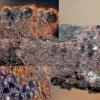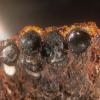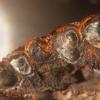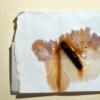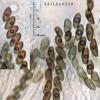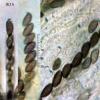
19-12-2025 10:10
Patrice TANCHAUDBonjour, récolte réalisée en milieu dunaire, a

18-12-2025 17:23
 Bruno Coué
Bruno Coué
Bonjour,je serais heureux d'avoir votre avis sur c

18-12-2025 21:17
Pol DebaenstThe identification took me to Byssonectria deformi

18-12-2025 18:07
Margot en Geert VullingsThese plumes were found on rotten wood.They strong

17-12-2025 18:35
 Michel Hairaud
Michel Hairaud
Bonjour à tous/Hi to everyone I am passing along

15-12-2025 15:48
 Danny Newman
Danny Newman
Melanospora cf. lagenaria on old, rotting, fallen

15-12-2025 15:54
 Johan Boonefaes
Johan Boonefaes
Unknown anamorph found on the ground in coastal sa

15-12-2025 21:11
 Hardware Tony
Hardware Tony
Small clavate hairs, negative croziers and IKI bb

15-12-2025 07:09
 Danny Newman
Danny Newman
indet. Rutstroemiaceae sp. on unk. fallen leavesMc
These resupinate stromata grow on wood of Fagus sylvatica. KOH 10% extractable pigments are orange red but peripherically purplish. Asci have an apical apparatus Mlz. negative but bluish in IKI.
Could be H. rubiginosum?
No smell I have noted, perithecia are 375-575 microns high and stromata are small (only 3-4 cm)
Enrique

I guess you studied it in detail because it seemed a bit strange to you. The results of your chromatography are indeed surprising.
I would be glad to see it and I will forward it to Marc to study its HPLC profile.
Thanks in advance,
Jacques
Best wishes
Enrique

I eventually received your specimen, thanks!
I wonder if two different Hypoxylons were not mixed up in your collection because I failed to see any purplish tinge around the orange pigments obtained on a paper with KOH, following your method.
Ascal rings also differ from what you observed in that they turn blue in Melzer and IKI as well.
I first though your fungus might be H. canariense, so far known only from Canary Islands where it is very common, in which I sometimes observed dubious reactions of ascal rings to iodine, but I do think the one you sent me is a depauperate form of H. rubiginosum.
Many undescribed species of Hypoxylon likely are still to be discovered, most of them resembling H. rubiginosum in gross morphology. Keep on screening them!
With best wishes,
Jacques
Enrique

